DeWalt D26670K Handleiding
Bekijk gratis de handleiding van DeWalt D26670K (7 pagina’s), behorend tot de categorie Router. Deze gids werd als nuttig beoordeeld door 77 mensen en kreeg gemiddeld 4.3 sterren uit 39 reviews. Heb je een vraag over DeWalt D26670K of wil je andere gebruikers van dit product iets vragen? Stel een vraag
Pagina 1/7

INSTRUCTION MANUAL
GUIDE D'UTILISATION
MANUAL DE INSTRUCCIONES
INSTRUCTIVO DE OPERACIÓN, CENTROS DE SERVICIO Y PÓLIZA
DE GARANTÍA. ADVERTENCIA: LÉASE ESTE INSTRUCTIVO ANTES
DE USAR EL PRODUCTO.
DEWALT Industrial Tool Co., 701 Joppa Road, Baltimore, MD 21286
(AUG06) Form No. A18652-00 D26670 Copyright © 2006 DEWALT
The following are trademarks for one or more D WALT power tools: the yellow and black color scheme; the E
“D” shaped air intake grill; the array of pyramids on the handgrip; the kit box configuration; and the array of
lozenge-shaped humps on the surface of the tool.
D26670
Heavy-Duty Compact Router
Toupie compacte de service intensif
Rebajadora compacta para trabajo pesado
If you have questions or comments, contact us.
Pour toute question ou tout commentaire, nous contacter.
Si tiene dudas o comentarios, contáctenos.
1-800-4-D WALT • www.dewalt.comE
IF YOU HAVE ANY QUESTIONS OR COMMENTS ABOUT THIS OR ANY DEWALT TOOL,
CALL US TOLL FREE AT: 1-800-4-DEWALT (1-800-433-9258)
General Safety Rules
WARNING! Read all instructions. Failure to follow all instructions listed below
may result in electric shock, fire and/or serious injury. The term “power tool” in all
of the warnings listed below refers to your mains-operated (corded) power tool or
battery-operated (cordless) power tool.
SAVE THESE INSTRUCTIONS
1) WORK AREA SAFETY
a) Keep work area clean and well lit. Cluttered or dark areas invite accidents.
b) Do not operate power tools in explosive atmospheres, such as in the presence of
flammable liquids, gases or dust. Power tools create sparks which may ignite the dust
or fumes.
c) Keep children and bystanders away while operating a power tool. Distractions can
cause you to lose control.
2) ELECTRICAL SAFETY
a) Power tool plugs must match the outlet. Never modify the plug in any way. Do not
use any adapter plugs with earthed (grounded) power tools. Unmodified plugs and
matching outlets will reduce risk of electric shock.
b) Avoid body contact with earthed or grounded surfaces such as pipes, radiators,
ranges and refrigerators. There is an increased risk of electric shock if your body is
earthed or grounded.
c) Do not expose power tools to rain or wet conditions. Water entering a power tool will
increase the risk of electric shock.
d) Do not abuse the cord. Never use the cord for carrying, pulling or unplugging the
power tool. Keep cord away from heat, oil, sharp edges or moving parts. Damaged
or entangled cords increase the risk of electric shock. Replace or repair damaged cords.
Make sure your extension cord is in good condition. Use only 3-wire extension cords that
have 3-prong grounding-type plugs and 3-pole receptacles that accept the tool’s plug.
e) When operating a power tool outdoors, use an extension cord suitable for outdoor
use. Use of a cord suitable for outdoor use reduces the risk of electric shock. When using
an extension cord, be sure to use one heavy enough to carry the current your product will
draw. An undersized cord will cause a drop in line voltage resulting in loss of power and
overheating. The following table shows the correct size to use depending on cord length
and nameplate ampere rating. If in doubt, use the next heavier gauge. The smaller the
gauge number, the heavier the cord.
Minimum Gauge for Cord Sets
Volts Total Length of Cord in Feet
120V 0-25 26-50 51-100 101-150
Ampere Rating
More Not more AWG
Than Than
0 - 6 18 16 16 14
3) PERSONAL SAFETY
a) Stay alert, watch what you are doing and use common sense when operating a
power tool. Do not use a power tool while you are tired or under the influence of
drugs, alcohol or medication. A moment of inattention while operating power toolsmay
result in serious personal injury.
b) Use safety equipment. Always wear eye protection. Safety equipment such as dust
mask, non-skid safety shoes, hard hat, or hearing protection used for appropriate condi-
tions will reduce personal injuries.
c) Avoid accidental starting. Ensure the switch is in the off-position before plugging
in. Carrying power tools with your finger on the switch or plugging in power tools that have
the switch on invites accidents.
d) Remove any adjusting key or wrench before turning the power tool on. A wrench or
a key left attached to a rotating part of the power tool may result in personal injury.
e) Do not overreach. Keep proper footing and balance at all times. This enables better
control of the power tool in unexpected situations.
f) Dress properly. Do not wear loose clothing or jewellery. Keep your hair, clothing and
gloves away from moving parts. Loose clothes, jewellery or long hair can be caught in
moving parts. Air vents often cover moving parts and should also be avoided.
g) If devices are provided for the connection of dust extraction and collection facilities,
ensure these are connected and properly used. Use of these devices can reduce dust-
related hazards.
4) POWER TOOL USE AND CARE
a) Do not force the power tool. Use the correct power tool for your application. The
correct power tool will do the job better and safer at the rate for which it was designed.
b) Do not use the power tool if the switch does not turn it on and off. Any power tool
that cannot be controlled with the switch is dangerous and must be repaired.
c) Disconnect the plug from the power source and/or the battery pack from the power
tool before making any adjustments, changing accessories, or storing power tools.
Such preventive safety measures reduce the risk of starting the power tool accidentally.
d) Store idle power tools out of the reach of children and do not allow persons unfamil-
iar with the power tool or these instructions to operate the power tool. Power tools
are dangerous in the hands of untrained users.
e) Maintain power tools. Check for misalignment or binding of moving parts, breakage
of parts and any other condition that may affect the power tools operation. If dam-
aged, have the power tool repaired before use. Many accidents are caused by poorly
maintained power tools.
f) Keep cutting tools sharp and clean. Properly maintained cutting tools with sharp cutting
edges are less likely to bind and are easier to control.
g) Use the power tool, accessories and tool bits etc., in accordance with these instruc-
tions and in the manner intended for the particular type of power tool, taking into
account the working conditions and the work to be performed. Use of the power tool
for operations different from those intended could result in a hazardous situation.
5) SERVICE
a) Have your power tool serviced by a qualified repair person using only identical
replacement parts. This will ensure that the safety of the power tool is maintained.
Specific Safety Rules for Routers
• Hold tool by insulated gripping surfaces when performing an operation where the cut-
ting tool may contact hidden wiring or its own cord. Contact with a “live” wire will make
exposed metal parts of the tool “live” and shock the operator.
• Use clamps or another practical way to secure and support the workpiece to a stable
platform. Holding the work by hand or against your body leaves it unstable and may lead to
loss of control.
• Never run the motor unit when it is not inserted in one of the router bases. The motor
is not designed to be handheld.
• Keep handles dry, clean and free from oil and grease. This will enable better control of
the tool.
• Keep hands away from cutting area. Never reach under the workpiece for any reason.
Keep the router base firmly in contact with the workpiece when cutting. Hold the router
only by the handles. These precautions will reduce the risk of personal injury.
• Use sharp cutters. Dull cutters may cause the router to swerve or stall under pressure.
• Never touch the bit immediately after use. It may be extremely hot.
• Be sure that the motor has stopped completely before you lay the router down. If the
cutter head is still spinning when the tool is laid down, it could cause injury or damage.
• Be sure that the router bit is clear of the workpiece before starting the motor. If the bit
is in contact with the workpiece when the motor starts it could make the router jump, causing
damage or injury.
• Do not press spindle lock button while the motor is running. Doing so can damage the
spindle lock.
WARNING: Wear appropriate hearing protection during use [ANSI S12.6 (S3.19)]. Under
some conditions and duration of use, noise from this product may contribute to hearing loss.
WARNING: Some dust created by power sanding, sawing, grinding, drilling, and other con-
struction activities contains chemicals known to cause cancer, birth defects or other reproduc-
tive harm. Some examples of these chemicals are:
• lead from lead-based paint.
• crystalline silica from bricks and cement and other masonry products.
• arsenic and chromium from chemically-treated lumber (CCA).
Your risk from these exposures varies, depending on how often you do this type of work. To
reduce your exposure to these chemicals: work in a well ventilated area, and work with approved
safety equipment, such as those dust masks that are specially designed to filter out microscopic
particles.
WARNING: Avoid prolonged contact with dust from power sanding, sawing, grinding,
drilling, and other construction activities. Wear protective clothing and wash exposed
areas with soap and water. Allowing dust to get into your mouth, eyes, or lay on the skin may
promote absorption of harmful chemicals.
WARNING: Use of this tool can generate and/or disburse dust, which may cause serious and
permanent respiratory or other injury. Always use NIOSH/OSHA approved respiratory protection
appropriate for the dust exposure. Direct particles away from face and body.
WARNING: ALWAYS USE SAFETY GLASSES. Everyday eyeglasses are NOT safety
glasses. Also use face or dust mask if cutting operation is dusty. ALWAYS WEAR CERTIFIED
SAFETY EQUIPMENT:
• ANSI Z87.1 eye protection (CAN/CSA Z94.3)
• ANSI S12.6 (S3.19) hearing protection
• NIOSH/OSHA/MSHA respiratory protection
• The label on your tool may include the following symbols. The symbols and definitions are as
follows:
V ...................... volts A ..........................amperes
Hz ....................hertz W ......................... watts
min ...................minutes ....................... alternating current
.................direct current no .........................no load speed
.................... Class I Construction .........................ear thing ter minal
(grounded) ........................ safety alert symbol
..................... Class II Construction …/min ..................revolutions or reciprocations
(double insulated) per minute
BPM ..............beats per minute
Motor
Your DEWALT tool is powered by a D WALT-built motor. Be sure your power supply agrees with E
the nameplate marking.
120 V means your tool may be operated with alternating current only. Do not connect your tool
to a direct current power supply. All DEWALT tools are factory tested; if this tool does not oper-
ate, check the power supply.
D26670 Heavy-Duty Compact Router
D26670 Heavy-Duty Compact Routers are designed for flush and bevel trimming of laminated
plastics and other similar materials that have a bonding agent too hard to be trimmed with
ordinary tools.
The tilt-base allows trimming into corners inaccessible to standard routers. This model also
allows the trimming of laminated surfaces joining at angles of 45° to 90°. This feature eliminates
the need for hand-trimming in many applications.
The off-set base is used to trim into the corner of a back splash and for trimming narrow
ledges.
Selecting the Bit
WARNING: Projectile hazard. Only use bits with 1/4" (6.4 mm) shanks. Smaller shank bits will
not be secure and could become loose during operation.
These routers are equipped with a 1/4" (6.4 mm) diameter collet which accepts bits having 1/4"
(6.4 mm) diameter shanks. Bits are available as an accessory.
NOTE: It is recommended that the unit only be used with bits that have a cutting diameter of
13/16" (20.6 mm) or less.
Defi nitions: Safety Guidelines
The definitions below describe the level of severity for each signal word. Please read the
manual and pay attention to these symbols.
DANGER: Indicates an imminently hazardous situation which, if not avoided, will
result in death or serious injury.
WARNING: could Indicates a potentially hazardous situation which, if not avoided,
result in death or serious injury.
CAUTION: Indicates a potentially hazardous situation which, if not avoided, result may
in minor or moderate injury.
CAUTION: Used without the safety alert symbol indicates a potentially hazardous
situation which, if not avoided, may result in property damage.

COMPONENTS (FIG. 1)
A. ON-OFF Switch
B. Base Locking Screw
C. Spindle Lock
D. Collet Nut
E. Base
F. Sub-Base
G. Depth Adjusting Wheel
Starting and Stopping Motor (Fig. 1)
The ON/OFF switch (A) is located on the side of the unit, close to the top. To start the router,
move the switch down to the ON position. To stop the router, move the switch up to the OFF
position.
Prior to plugging in the tool, make sure that the switch is in the OFF position and that the power
circuit voltage is the same as that shown on the specification plate of the router.
WARNING: To reduce the risk of personal injury or tool damage, grasp router firmly to resist
starting torque and make sure bit is clear of workpiece and foreign objects.
WARNING: To reduce the risk of personal injury or damage to finished work always allow the
motor to come to a COMPLETE STOP before setting router down.
Standard and Tilt Bases (Fig. 1, 2)
INSTALLING THE BIT
WARNING: To reduce the risk of injury, turn unit off and disconnect it from power
source before installing and removing accessories, before adjusting or when making
repairs. An accidental start-up can cause injury.
WARNING: Projectile hazard. Only use bits with 1/4" (6.4 mm) shanks. Smaller shank bits will
not be secure and could become loose during operation.
CAUTION: To avoid damaging your router, do not tighten the collet without a bit inserted.
CAUTION: To avoid damaging your router, do not press spindle lock button while the motor is
running.
NOTE: It is recommended that the unit only be used with bits that have a cutting diameter of
13/16" (20.6 mm) or less.
NOTE: Directions for installing bits in the offset base are included later in this manual.
1. You can install bits with the motor unit attached or removed.
2. Depress the spindle lock (C) and rotate the collet nut (D) by hand until the lock engages the
hole in the motor spindle. Loosen the collet nut (D) slightly.
3. Clean and insert the shank of the bit (H) into the collet until the end of the shank bottoms.
Then withdraw the bit approximately 1/16" (1.6 mm).
4. While holding the spindle lock, use the provided open-end wrench to tighten the collet nut
(clockwise) securely.
REMOVING THE BIT
WARNING: To reduce the risk of injury, turn unit off and disconnect it from power
source before installing and removing accessories, before adjusting or when making
repairs. An accidental start-up can cause injury.
WARNING: Burn hazard. Do not touch the router bits immediately after use.
CAUTION: To avoid damaging your router, do not press spindle lock button while the motor is
running.
NOTE: Directions for removing bits in the offset base are included later in this manual.
1. You can remove bits either with the motor unit attached or removed.
2. Depress the spindle lock (C) and rotate the collet nut (D) by hand until the lock engages the
hole in the motor spindle.
3. While holding the spindle lock engaged, loosen the collet nut (D) by turning it counterclock-
wise with the provided open-end wrench.
4. If the bit (H) is tight on the collet, tap the collet nut (D) with a wrench to release the bit.
ADJUSTING THE DEPTH OF CUT (FIG. 1)
WARNING: To reduce the risk of injury, turn unit off and disconnect it from power
source before installing and removing accessories, before adjusting or when making
repairs. An accidental start-up can cause injury.
1. Loosen the base-locking screw (B) approximately 1/4 turn.
2. Turn the depth-adjusting wheel (G) to reduce or increase the depth of cut.
3. Tighten the base-locking screw (B) securely. Make a test cut in scrap material to check the
depth of cut.
4. Repeat steps 1 through 3 until the desired depth of cut is achieved.
For the tilt base, you may have to slightly withdraw some bits in the collet to obtain a maximum
depth of cut.
FIG. 6
Sub-base is shown turned over.
Sous-base est montré retourné.
Subbase se demuestra al revés.
3/16" (4.8 mm)
FIG. 5
FIG. 2
IJ
L
K
M
A
B
C
D
GE
F
FIG. 1 H
N
O
P
Q
N
S
T
U
R
Trims up to vertical surfaces.
Taillage de surfaces verticales.
Cortes hasta superficies verticales.
FIG. 4
W
V
FIG. 9 FIG. 10
X
Y
Z
FIG. 11
FIG. 12
FIG. 13
FIG. 14
FIG. 15
FIG. 16
FIG. 17
DD
CC
BB
AA
WARNING: When you withdraw a bit, be certain that at least 1/2" (1.3 cm) of the bit shank is
engaged in the collet. Do not use bits that result in having less than 1/2" (1.3 cm) of the bit shank
engaged in the collet. To do so may cause poor gripping of the collet, resulting in a loose bit. If
the bit comes out of the collet, it could cause damage to the workpiece and/or personal injury.
Adjusting the Sub-Base Alignment for
Standard and Tilt Bases (Fig. 1)
WARNING: To reduce the risk of injury, turn unit off and disconnect it from power
source before installing and removing accessories, before adjusting or when making
repairs. An accidental start-up can cause injury.
Applications using a template guide require the bit to be centered within the guide, and the
center hole in the sub-base to be in line with the collet of the motor unit. Your model has an
adjustable sub-base (F). To adjust:
1. Install the desired template guide on the sub-base and tighten securely.
2. Loosen the sub-base mounting screws just enough to allow the sub-base to move on the
base (E). The base movement will be very slight.
3. Install a straight 1/4" diameter bit in the collet of the motor unit and tighten securely.(6.4 mm)
4. Attach the motor unit to the base. Align the hole in the template guide with the bit and adjust
the depth of cut so that the bit extends through the template guide. Tighten the motor unit in
the base.
5. Tighten the sub-base mounting screws securely.
Tilt Base Assembly (Fig. 1, 3)
The tilt base is designed for use with flush trim bits for trimming into corners. You may also use
it with other self-pilot trim bits for conventional trimming at 90° setting.
WARNING: To reduce the risk of injury, turn unit off and disconnect it from power
source before installing and removing accessories, before adjusting or when making
repairs. An accidental start-up can cause injury.
TO ASSEMBLE THE TILT BASE (FIG. 1, 3)
1. Remove the standard base (if necessary) by removing screw (B), washer and spring (not
shown).
2. Attach the tilt base using screw (I) and flat washer (J) included with the tilt base.
TO ADJUST THE TILT (FIG. 1, 3)
1. Loosen two tilt locking screws (L) (one on each side of base) using the provided hex
wrench.
2. Match the base-aligning index mark (K) with the desired angle and tighten securely.
3. Make a trial cut on scrap material to check the alignment.
Typical Applications with Tilt Base (Fig. 4)
The tilt base is designed for these typical operations:
1. Trimming up to vertical surfaces.
2. Trimming odd angled corners less than or greater than 90°.
Offset Base Assembly (Fig. 2, 5–9)
The offset base allows trimming in tight spaces (the front edge of vertical backsplashes, inside
corners, etc.) and easy scribing of backsplashes to a wall.
To attach the offset base, first remove the standard base (if necessary) by removing screw (B),
washer and spring. Then, attach the offset base using these instructions:
WARNING: To reduce the risk of injury, turn unit off and disconnect it from power
source before installing and removing accessories, before adjusting or when making
repairs. An accidental start-up can cause injury.
Trims odd angled corners less than or
greater than 90°.
Taillage d’angles spéciaux inférieurs ou
supérieurs à 90°.
Cortes de extremos en ángulo menores
o mayores a 90°.
FIG. 3
FIG. 7 FIG. 8

CAUTION: To avoid damaging your router, do not tighten the collet without a bit inserted.
CAUTION: To avoid damaging your router, do not press spindle lock button while the motor is
running.
1. Depress spindle lock (C) and unscrew and remove the collet nut (D) and collet (M) from the
motor unit.
2. Attach the drive pulley (N) to the motor spindle. Screw in securely.
3. Use a Phillips screwdriver to remove the three sub-base mounting screws (O) from the
base. Remove the sub-base.
4. Position the base (R) on the drive pulley (N) (from step 2). Be sure that the motor drive pul-
ley engages the drive belt inside the base housing.
5. Secure the motor to the base with the thumbscrew (U), spring (T), and washer (S).
6. Use a Phillips screwdriver to install a #6-32 x 3/8" screw in the hole (Q). Tighten securely.
7. Clean the collet nut and collet (from step 1), and attach to the spindle (P) in the offset base.
Use hex wrench (W) in hole (V) to lock spindle. Hand tighten for further adjustment.
8. Position the sub-base to the base housing and secure with the three screws (O) that were
removed in step 3.
To Install & Remove Bit (Offset Base) (Fig. 9)
WARNING: To reduce the risk of injury, turn unit off and disconnect it from power
source before installing and removing accessories, before adjusting or when making
repairs. An accidental start-up can cause injury.
WARNING: Projectile hazard. Only use bits with 1/4" (6.4 mm) shanks. Smaller shank bits will
not be secure and could become loose during operation.
CAUTION: To avoid damaging your router, do not tighten the collet without a bit inserted.
CAUTION: To avoid damaging your router, do not press spindle lock button while the motor is
running.
CAUTION: To avoid damaging the drive belt, never tighten or loosen the collet nut with the
motor unit’s spindle lock engaged.
NOTE: It is recommended that the unit only be used with bits that have a cutting diameter of
13/16" (20.6 mm) or less.
1. To lock spindle on the offset base, insert the long portion of the hex wrench (W) through
the spindle lock hole (V), so that the wrench protrudes from both sides of the base housing.
For help inserting the hex wrench, rotate the spindle by hand to align the hole in the spindle
with the holes in the housing.
2. Clean and insert the bit shank into the collet until the end of the shank bottoms. Then with-
draw the bit approximately 1/16" (1.6 mm). Tighten the collet nut securely with the collet
wrench.
3. To remove the bit, reverse the procedure. If the bit will not remove easily, lightly tap the bit
shank with a wrench.
4. Remove hex wrench (W).
Adjusting Depth of Cut (Offset Base) (Fig. 10, 11)
WARNING: To reduce the risk of injury, turn unit off and disconnect it from power
source before installing and removing accessories, before adjusting or when making
repairs. An accidental start-up can cause injury.
1. Turn the router on its side and loosen the collet nut slightly. See To Install & Remove Bit
(Offset Base).
2. Place the hex wrench (X) in the hole (Y) to access the depth-adjusting screw.
3. Hold the spindle (Z) in place and apply light upward pressure on the bit to maintain contact
between the bit shank and the adjusting screw. Turn the hex wrench counter-clockwise to
increase exposure and clockwise to decrease exposure.
4. To turn the sub-base over to allow more clearance (3/16" or 4.8 mm) for long-shank bits (Fig.
11):
a. Remove three sub-base mounting screws (O).
b. Turn sub-base over and re-attach using screws removed in step a.
Typical Applications with Offset Base (Fig. 12–17)
TRIMMING 3/4" (19 mm) VERTICAL BACKSPLASH (FIG. 12, 13)
Trimming the front edge of 3/4" (19 mm) vertical backsplash (Fig.13) is an operation standard
routers with round or square bases are unable to do without the use of a special bit. The
operation is made easy with the offset base fitted with a solid carbide self-piloted bit. The
self-piloted bit (AA) allows one-pass trimming. The triangular base (BB) enables trimming with
backsplash in place.
IN-AND-OUT TRIMMING OF INSTALLED CORNER (FIG. 14, 15)
The offset base can also trim into and out of an installed backsplash corner (Fig. 15) with little
or no hand trimming required. Combining a self-piloted bit and a triangular base (CC) enables
complete corner trimming with backsplash in place.
SCRIBING OF BACKSPLASH TO WALL (FIG. 16, 17)
The offset base can accurately scribe the back side of a preassembled panel or post-formed
backsplash (Fig. 17). Once the back lip is accurately scribed, the trimmed portion is then
pushed against the wall and mated exactly. As the front edge of the router is guided against
the wall (Fig. 17), the router creates an exact reproduction of the wall surface in one pass.
Use a 3/4 (19 mm) spacer to maintain a 3/4" " (19 mm) distance (DD) from the wall and the
back of the backsplash being cut.
MAINTENANCE
Cleaning
WARNING: Blowing dust and chips out of the motor housing using clean, dry compressed air
is a necessary regular maintenance procedure. Dust and chips containing metal particles often
accumulate on interior surfaces and could create an electrical shock or electrocution if not fre-
quently cleaned out. ALWAYS WEAR SAFETY GLASSES.
CAUTION: When cleaning, use only a damp cloth on plastic parts. Many household cleaners
contain chemicals which could seriously damage plastic. Also, do not use gasoline, turpentine,
lacquer or paint thinner, dry cleaning fluids or similar products which may seriously damage plas-
tic parts. Never let any liquid get inside the tool; never immerse any part of the tool into a liquid.
Lubrication
This tool has been lubricated with a sufficient amount of high-grade lubricant for the life of this
unit under normal conditions. No further lubricaton is necessary.
Accessories
WARNING: Since accessories, other than those offered by D WALT, have not been tested E
with this product, use of such accessories with this tool could be hazardous. To reduce the risk
of injury, only DEWALT, recommended accessories should be used with this product.
Recommended accessories for use with your tool are available at extra cost from your local
service center. If you need any assistance in locating any accessory, please contact DEWALT
Industrial Tool Co., 701 East Joppa Road, Baltimore, MD 21286, call 1-800-4-DEWALT (1-800-
433-9258) or visit our website www.dewalt.com.
Repairs
To assure product SAFETY and RELIABILITY, repairs, maintenance and adjustment (including
brush inspection and replacement) should be performed by a DEWALT factory service center,
a DEWALT authorized service center or other qualified service personnel. Always use identical
replacement parts.
Three Year Limited Warranty
DEWALT will repair, without charge, any defects due to faulty materials or workmanship for three
years from the date of purchase. This warranty does not cover part failure due to normal wear
or tool abuse. For further detail of warranty coverage and warranty repair information, visit www.
dewalt.com or call 1-800-4-DEWALT (1-800-433-9258). This warranty does not apply to acces-
sories or damage caused where repairs have been made or attempted by others. This warranty
gives you specific legal rights and you may have other rights which vary in certain states or
provinces.
In addition to the warranty, DEWALT tools are covered by our:
1 YEAR FREE SERVICE
DEWALT will maintain the tool and replace worn parts caused by normal use, for free, any time
during the first year after purchase.
90 DAY MONEY BACK GUARANTEE
If you are not completely satisfied with the performance of your DEWALT Power Tool, Laser, or
Nailer for any reason, you can return it within 90 days from the date of purchase with a receipt
for a full refund – no questions asked.
LATIN AMERICA: This warranty does not apply to products sold in Latin America. For products
sold in Latin America, see country specific warranty information contained either in the packag-
ing, call the local company or see website for warranty information.
FREE WARNING LABEL REPLACEMENT: If your warning labels become illegible or are miss-
ing, call 1-800-4-DEWALT for a free replacement.
Défi nitions : lignes directrices en matière de sécurité
Les définitions ci-dessous décrivent le niveau de gravité pour chaque symbole. Veuillez lire
le mode d’emploi et porter une attention particulière à ces symboles.
DANGER : Indique une situation dangereuse imminente qui, si elle n’est pas évitée,
causera la mort ou des blessures graves.
AVERTISSEMENT :
Indique une situation potentiellement dangereuse qui, si elle n’est
pas évitée, se solder par un pourrait décès ou des blessures graves.
MISE EN GARDE : Indique une situation potentiellement dangereuse qui, si elle n’est pas
évitée pourrait se solder par des blessures mineures ou modérées.
MISE EN GARDE : Utilisé sans le symbole d’alerte à la sécurité, indique une situation poten-
tiellement dangereuse qui, si elle n'est pas évitée se solder pourrait par des dommages
à la propriété.
POUR TOUT RENSEIGNEMENT SUPPLÉMENTAIRE SUR CET OUTIL OU TOUT AUTRE
OUTIL DEWALT, COMPOSER SANS FRAIS LE NUMÉRO : 1-800-4-DEWALT (1-800-433-
9258)
Règles de sécurité – Généralités
AVERTISSEMENT : Lire toutes ces directives. Tout manquement aux directives
suivantes pose des risques de choc électrique, d’incendie et/ou de blessure grave.
Le terme « outil électrique » dans tous les avertissements ci-après se rapporte à votre
outil électrique à alimentation sur secteur (avec fil) ou par piles (sans fil).
CONSERVER CES DIRECTIVES
1) SÉCURITÉ - AIRE DE TRAVAIL
a) Maintenir l’aire de travail propre et bien éclairée. Les lieux encombrés ou sombres sont
propices aux accidents.
b) Ne pas faire fonctionner un outil électrique dans une atmosphère explosive, en
présence par exemple de poussières, gaz ou liquides inflammables. Les outils élec-
triques peuvent engendrer des étincelles qui pourraient enflammer toute émanation ou
poussière ambiante.
c) Tenir les enfants, ou toute autre personne, éloignés pendant l’utilisation d’un outil
électrique. Toute distraction pourrait vous faire perdre la maîtrise de ce dernier.
2) SÉCURITÉ – ÉLECTRICITÉ
a) La fiche électrique de l’outil doit correspondre à la prise murale. Ne jamais modi-
fier la fiche en aucune façon. Ne jamais utiliser de fiche d’adaptation avec un outil
électrique mis à la terre. L’utilisation de fiches d’origine et de prises appropriées réduira
les risques de choc électrique.
b) Éviter tout contact corporel avec des éléments mis à la terre comme tuyaux, radia-
teurs, cuisinières ou réfrigérateurs. Les risques de choc électrique augmentent lorsque
le corps est mis à la terre.
c) Ne pas exposer les outils électriques à la pluie ou à l’humidité. Toute pénétration d’un
outil électrique par un liquide augmente les risques de choc électrique.
d) Ne pas utiliser le cordon de façon abusive. Ne jamais utiliser le cordon pour trans-
porter, tirer ou débrancher un outil électrique. Protéger le cordon de la chaleur,
de l’huile et de tout bord tranchant ou pièce mobile. Les cordons endommagés ou
emmêlés augmentent les risques de choc électrique. Remplacer ou faire réparer tout
cordon endommagé. S’assurer que la rallonge est en bon état. N’utiliser que des rallonges
trifilaires munies de fiches tripolaires et des prises tripolaires acceptant la fiche de l’outil.
e) Lors de l’utilisation d’un outil électrique à l’extérieur, n’utiliser que des rallonges con-
çues pour l’extérieur. L’utilisation d’une rallonge conçue pour l’extérieur réduit les risques de
choc électrique. En cas d’utilisation d’une rallonge, s’assurer que les valeurs nominales de
la rallonge utilisée correspondent bien à celles de l’outil alimenté. L’usage d’une rallonge de
calibre insuffisant causera une chute de tension entraînant perte de puissance et surchauffe.
Le tableau ci-dessous illustre les calibres à utiliser selon la longueur de rallonge et l’intensité
nominale indiquée sur la plaque signalétique. En cas de doutes, utiliser le calibre suivant. Plus
le calibre est petit, plus la rallonge peut supporter de courant.
Calibre mínimo para cordones de extensión
Volts Longitud total del cordón en metros
120V 0-7,6 7,6-15,2 15,2-30,4 30,4-45,7
Amperaje
Más No más Calibre del cordón AWG
de de
0 - 6 18 16 16 14
3) SÉCURITÉ PERSONNELLE
a) Rester vigilant en tout temps et faire preuve de jugement pendant l’utilisation d’un
outil électrique. Ne pas utiliser d’outil électrique en cas de fatigue ou sous l’influence
de drogues, d’alcool ou de médicaments. Tout moment d’inattention pendant l’utilisation
d’un outil électrique pose des risques de blessure grave.
b) Utiliser le matériel de sécurité approprié. Toujours porter des lunettes de protection.
Le fait de porter un masque anti-poussières, des chaussures antidérapantes, un casque
de sécurité ou des protecteurs auditifs lorsque la situation le requiert réduira les risques
de blessure.
c) Éviter tout démarrage accidentel. S’assurer que l’interrupteur est en position d’arrêt
avant tout branchement. Transporter un outil le doigt sur l’interrupteur ou brancher un
outil électrique alors que l’interrupteur est en position de marche invite les accidents.
d) Retirer toute clé de réglage avant de démarrer l’outil. Une clé laissée sur une pièce
rotative d’un outil électrique pose des risques de blessure.
e) Ne pas effectuer de travaux hors de portée. Les pieds doivent rester bien ancrés au
sol afin de maintenir son équilibre en tout temps. Cela permet de mieux maîtriser l’outil
électrique dans les situations imprévues.
f) Porter des vêtements appropriés. Ne pas porter de vêtements amples ni de bijoux.
Maintenir cheveux, vêtements et gants éloignés des pièces mobiles. Vêtements
amples, bijoux ou cheveux longs risquent de rester coincés dans ces pièces mobiles.
Prendre des précautions autour des évents car ils recouvrent des pièces mobiles.
g) Lorsque un dispositif de connexion à un système de dépoussiérage ou d’élimination
est fourni, s’assurer qu’il est connecté et utilisé correctement. L’utilisation de ces dis-
positifs peut réduire les risques engendrés par les poussières.
4) UTILISATION ET ENTRETIEN DES OUTILS ÉLECTRIQUES
a) Ne pas forcer un outil électrique. Utiliser l’outil approprié au travail en cours. L’outil
approprié effectuera un meilleur travail, de façon plus sûre et à la vitesse pour laquelle il a
été conçu.
b) Ne pas utiliser un outil électrique dont l’interrupteur est défectueux. Tout appareil
dont l’interrupteur est défectueux est dangereux et doit être réparé.
c) Débrancher la fiche du secteur et/ou le bloc-piles de l’outil électrique avant de
faire tout réglage ou changement d’accessoire, ou avant de ranger ce dernier. Ces
mesures préventives réduisent les risques de démarrage accidentel de l’appareil.
d) Après usage, ranger les outils électriques hors de la portée des enfants, et ne
permettre à aucune personne n’étant pas familière avec un outil électrique (ou son
manuel d’instruction) d’utiliser ce dernier. Les outils peuvent être dangereux entre les
mains des novices.
D26670 HEAVY-DUTY COMPACT ROUTER
DEWALT INDUSTRIAL TOOL CO., BALTIMORE, MD 21286 USA FOR SERVICE INFORMATION, CALL 1-800-4-DEWALT www.DEWALT.com
TO REDUCE THE RISK OF INJURY, USER MUST READ INSTRUCTION MANUAL. ALWAYS USE PROPER
EYE AND RESPIRATORY PROTECTION. PARA EL MANEJO SEGURO LEA EL MANUAL DE
INSTRUCCIONES. SIEMPRE SE DEBERÁ LLEVAR LA PROTECCIÓN APROPIADA PARA LA VISTA Y PARA
LAS VÍAS RESPIRATORIAS. À TITRE PRÉVENTIF, LIRE LE GUIDE. IL FAUT TOUJOURS PORTER DE
L’ÉQUIPEMENT DE PROTECTION OCULAIRE ET RESPIRATOIRE APPROPRIÉ.
WARNING/ADVERTENCIA/AVERTISSEMENT
D2667X
XXX HEAVY-DUTY COMPACT
ROUTER BASE
TO REDUCE THE RISK MUST READ
INSTRUCTION MANUAL. ALWAYS
USE PROPER EYE AND RESPIRATORY PROTECTION.
D WALT INDUSTRIAL TOOL CO., BALTIMORE, MD 21286 USAE
FOR SERVICE INFORMATION, CALL 1-800-4-DE WWW E COMWALT .D WALT.
PARA EL MANEJO SEGURO LEA
EL MANUAL DE INSTRUCCIONES.
SIEMPRE SE DEBERÁ LLEVAR LA PROTECCIÓN APROPIADA
PARA LA VISTA Y PARA LAS VÍAS RESPIRATORIAS.
À TITRE PRÉVENTIF, LIRE LE
GUIDE. IL FAUT TOUJOURS
PORTER DE L’ÉQUIPEMENT DE PROTECTION OCULAIRE ET
RESPIRATOIRE APPROPRIÉ.
Product specificaties
| Merk: | DeWalt |
| Categorie: | Router |
| Model: | D26670K |
Heb je hulp nodig?
Als je hulp nodig hebt met DeWalt D26670K stel dan hieronder een vraag en andere gebruikers zullen je antwoorden
Handleiding Router DeWalt

22 November 2024

22 November 2024

21 Juni 2023

16 Juni 2023

15 Juni 2023

26 Mei 2023

5 Mei 2023

18 April 2023

7 April 2023

4 April 2023
Handleiding Router
- Engenius
- Keezel
- Acer
- Shinybow
- RAVPower
- VTech
- Ruckus Wireless
- MuxLab
- VigilLink
- Devolo
- Vimar
- Bea-fon
- Motorola
- Foscam
- Alcatel
Nieuwste handleidingen voor Router
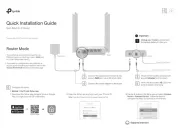
1 September 2025
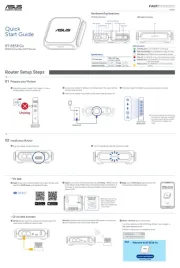
31 Augustus 2025

26 Augustus 2025

26 Augustus 2025

25 Augustus 2025

25 Augustus 2025
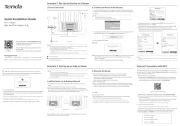
25 Augustus 2025
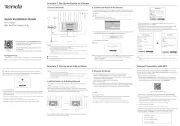
25 Augustus 2025
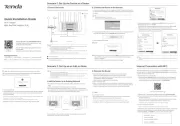
25 Augustus 2025

25 Augustus 2025